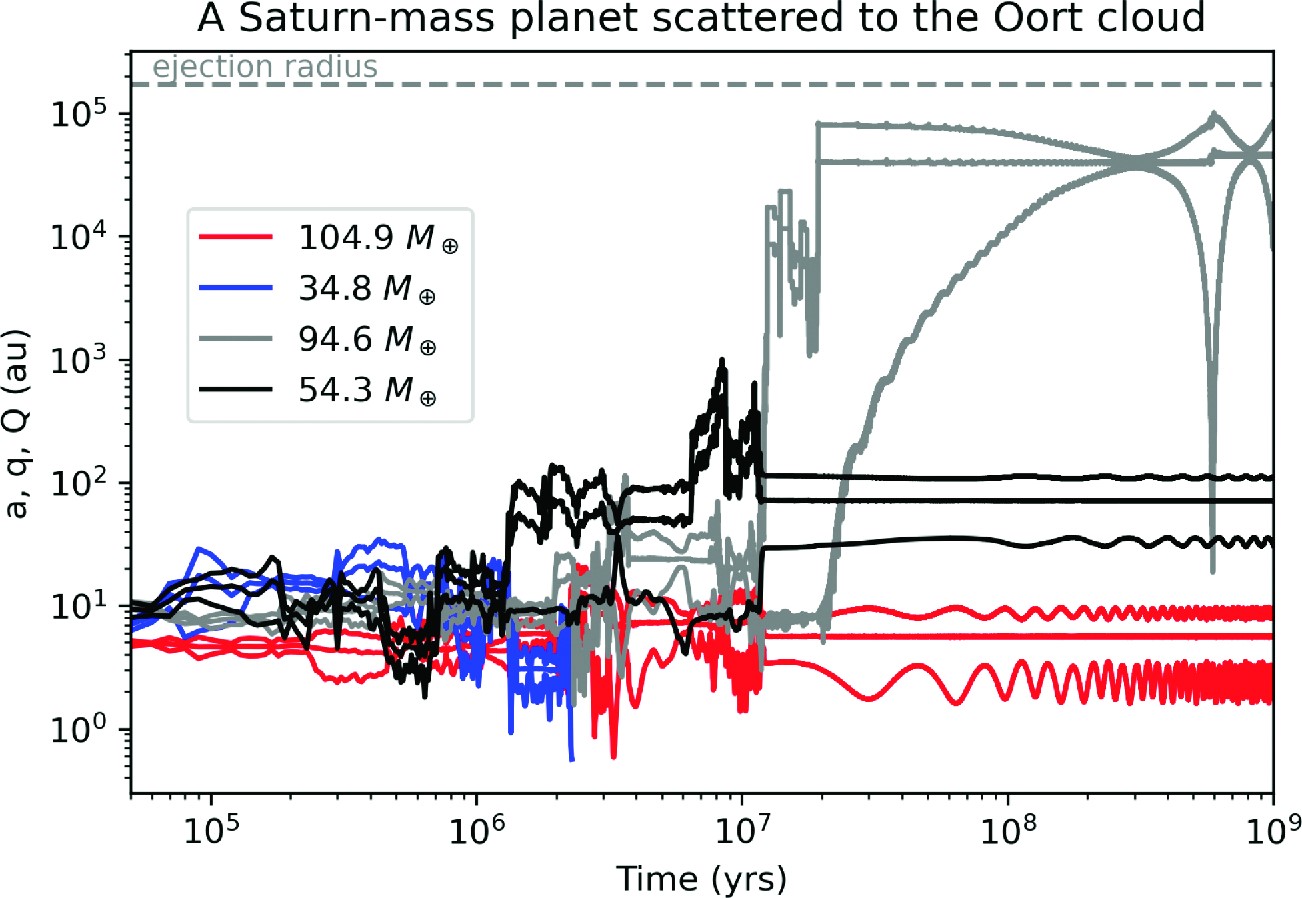Oort cloud (exo)planets
Abstract
Dynamical instabilities among giant planets are thought to be nearly ubiquitous and culminate in the ejection of one or more planets into interstellar space. Here, we perform N-body simulations of dynamical instabilities while accounting for torques from the galactic tidal field. We find that a fraction of planets that would otherwise have been ejected are instead trapped on very wide orbits analogous to those of Oort cloud comets. The fraction of ejected planets that are trapped ranges from 1 to 10 per cent, depending on the initial planetary mass distribution. The local galactic density has a modest effect on the trapping efficiency and the orbital radii of trapped planets. The majority of Oort cloud planets survive for Gyr time-scales. Taking into account the demographics of exoplanets, we estimate that one in every 200-3000 stars could host an Oort cloud planet. This value is likely an overestimate, as we do not account for instabilities that take place at early enough times to be affected by their host stars' birth cluster or planet stripping from passing stars. If the Solar system's dynamical instability happened after birth cluster dissolution, there is a ~7 per cent chance that an ice giant was captured in the Sun's Oort cloud.
- Publication:
-
Monthly Notices of the Royal Astronomical Society
- Pub Date:
- September 2023
- DOI:
- 10.1093/mnrasl/slad079
- arXiv:
- arXiv:2306.11109
- Bibcode:
- 2023MNRAS.524L..72R
- Keywords:
-
- Oort Cloud;
- planets and satellites: detection;
- planets and satellites: dynamical evolution and stability;
- Astrophysics - Earth and Planetary Astrophysics;
- Astrophysics - Astrophysics of Galaxies;
- Astrophysics - Solar and Stellar Astrophysics;
- Physics - Space Physics
- E-Print:
- MNRAS Letters, in press. Blog post about paper at https://planetplanet.net/2023/06/21/oort-cloud-exoplanets/
